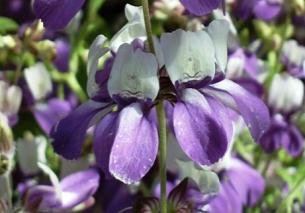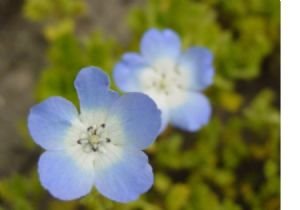Pesticide-free pastures are simple to establish, and -- at just a half-acre each -- easy to tend, according to U.S. Department of Agriculture (USDA) entomologist James H. Cane at the Pollinating Insects Biology, Management, and Systematics Research Unit in Logan, Utah.
Bee pasturing isn't a new idea, but studies by Cane and his collaborators in a research greenhouse and at outdoor sites in Utah and California are the most extensive to date.
 The research indicates that one of the best species of pastured pollinators is the blue orchard bee, Osmia lignaria, a gentle bee that helps with pollination tasks handled primarily by the nation's premier pollinator, the European honey bee, Apis mellifera. Cane estimates that, under good conditions, blue orchard bee populations could increase by as much as four- to fivefold a year in a well-designed, well-managed bee pasture.
The research indicates that one of the best species of pastured pollinators is the blue orchard bee, Osmia lignaria, a gentle bee that helps with pollination tasks handled primarily by the nation's premier pollinator, the European honey bee, Apis mellifera. Cane estimates that, under good conditions, blue orchard bee populations could increase by as much as four- to fivefold a year in a well-designed, well-managed bee pasture.Cane and colleagues have studied wildflowers that might be ideal for planting at bee pastures in California. In particular, the team
 was interested in early-flowering annuals that could help bolster populations of blue orchard bees needed to pollinate California's vast almond orchards.
was interested in early-flowering annuals that could help bolster populations of blue orchard bees needed to pollinate California's vast almond orchards.Five top-choice, bee-friendly wildflowers for bee pastures in almond-growing regions:
Chinese Houses (Collinsia heterophylla)
California Five-Spot (Nemophila maculata)
 Baby Blue Eyes (N. menziesii)
Baby Blue Eyes (N. menziesii)Lacy or Tansy Phacelia (Phacelia tanacetifolia)
California Bluebell (P. campanularia)
Source: USDA - Agricultural Research Service
No comments:
Post a Comment